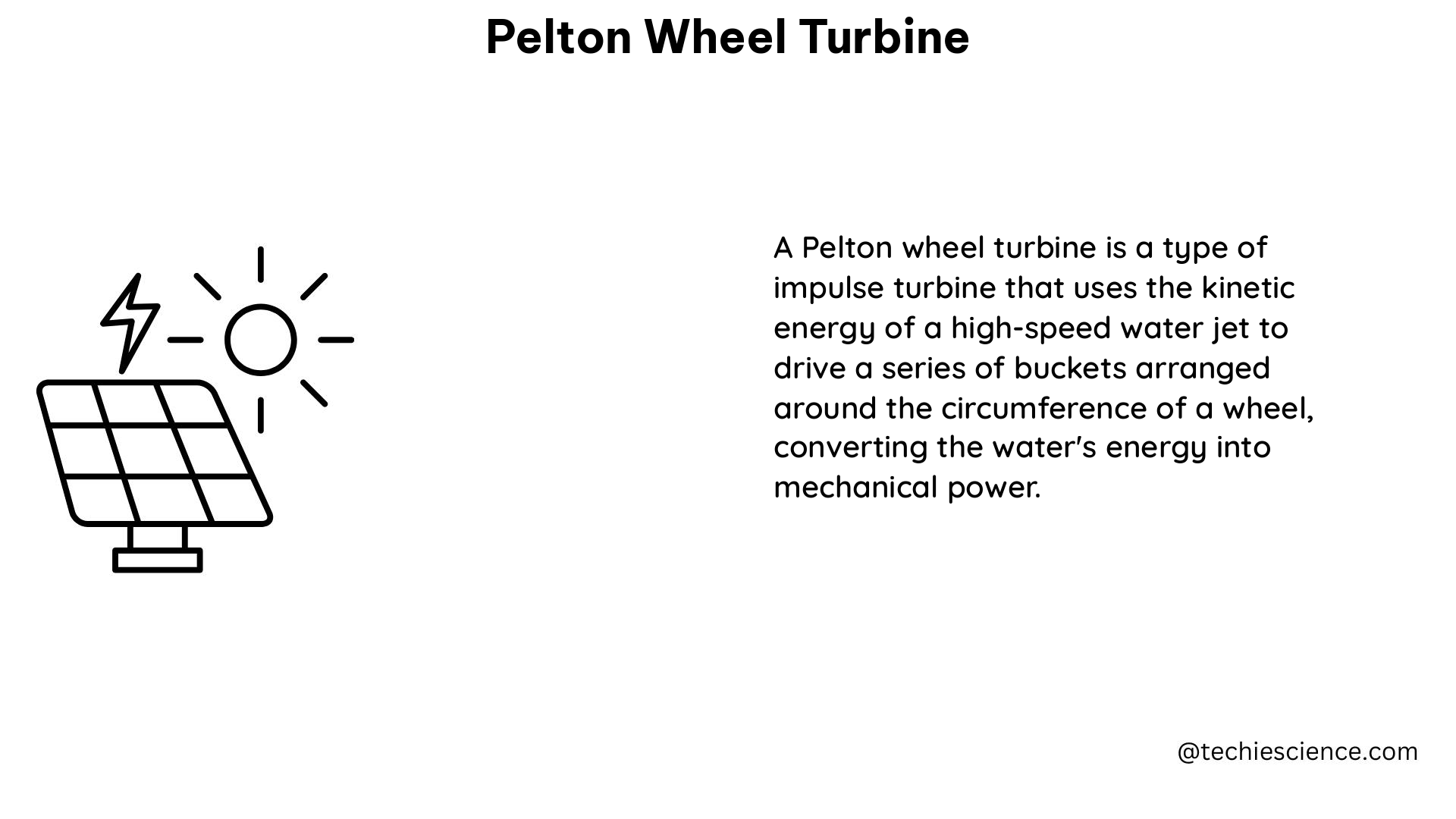Pelton wheel turbines are a type of impulse turbine widely used in hydroelectric power generation, particularly in high-head, low-flow applications. These turbines harness the kinetic energy of a high-velocity water jet to drive the rotation of a wheel, which in turn generates electricity. Understanding the technical specifications and design parameters of Pelton wheel turbines is crucial for their efficient and effective implementation in various hydropower projects.
Flow Rate and Head
The flow rate through a Pelton wheel turbine is a critical parameter, measured in cubic meters per second (m³/s) or gallons per minute (gpm). Typical Pelton wheel turbines can handle flow rates ranging from 0.1 m³/s to 10 m³/s, with the higher end of the range suitable for large-scale hydropower plants.
The head, or the vertical distance between the water source and the turbine, is another essential factor. Pelton wheel turbines are designed to operate under high-head conditions, typically ranging from 10 meters to 1,000 meters. The higher the head, the more kinetic energy the water jet can impart to the turbine, resulting in greater power output.
Power Output and Efficiency

The power output of a Pelton wheel turbine is measured in watts (W) or kilowatts (kW). Depending on the size and design, these turbines can generate power ranging from 5 kW to 10,000 kW, making them suitable for a wide variety of applications, from small-scale off-grid systems to large-scale hydroelectric power plants.
The efficiency of a Pelton wheel turbine is a measure of how effectively it converts the input power (from the water jet) into electrical power. Pelton wheel turbines can achieve efficiencies of up to 90%, making them one of the most efficient types of hydraulic turbines available.
Rotational Speed and Jet Velocity
The rotational speed of a Pelton wheel turbine is measured in revolutions per minute (RPM) and typically ranges from 500 RPM to 3,000 RPM, depending on the turbine’s size and the specific application.
The velocity of the water jet exiting the nozzle is another critical parameter, measured in meters per second (m/s) or feet per second (fps). Pelton wheel turbines are designed to operate with jet velocities ranging from 20 m/s to 50 m/s, which is essential for maximizing the kinetic energy transfer to the turbine.
Bucket Design and Number of Buckets
The design of the Pelton wheel buckets is crucial for the turbine’s performance. The bucket diameter can range from 0.1 meters to 1.5 meters, with the pitch (the distance between the centers of adjacent buckets) typically being 0.5 to 3.5 times the bucket diameter. The bucket angle, which determines the angle at which the water jet strikes the bucket, can range from 45 degrees to 90 degrees.
The number of buckets on the Pelton wheel can also affect the turbine’s performance and is typically between 6 and 36, depending on the specific design and application.
Nozzle Design and Turbine Weight
The design of the nozzle, which is responsible for directing the high-velocity water jet onto the Pelton wheel, is also an important consideration. The nozzle diameter can range from 0.01 meters to 0.1 meters, and the material is typically stainless steel or brass.
The weight of the Pelton wheel turbine is a quantifiable parameter that can affect its installation and operation. Typical Pelton wheel turbines can weigh anywhere from 50 kg to 5,000 kg, depending on the size and power output.
Conclusion
Pelton wheel turbines are highly efficient and versatile hydraulic turbines that play a crucial role in hydroelectric power generation. Understanding the technical specifications and design parameters of these turbines, such as flow rate, head, power output, efficiency, rotational speed, jet velocity, bucket design, nozzle design, and turbine weight, is essential for their proper selection, installation, and operation. By delving into the details presented in this comprehensive guide, engineers, researchers, and hydropower enthusiasts can gain a deeper understanding of the intricacies of Pelton wheel turbine technology and its applications.
References:
- Pelton Wheel Experiment
- Pelton Turbine
- Pelton Wheel Performance
- The state-of-art of design and research for Pelton turbine casing
- Performance analysis of Pelton turbine under different operating conditions: An experimental study

The lambdageeks.com Core SME Team is a group of experienced subject matter experts from diverse scientific and technical fields including Physics, Chemistry, Technology,Electronics & Electrical Engineering, Automotive, Mechanical Engineering. Our team collaborates to create high-quality, well-researched articles on a wide range of science and technology topics for the lambdageeks.com website.
All Our Senior SME are having more than 7 Years of experience in the respective fields . They are either Working Industry Professionals or assocaited With different Universities. Refer Our Authors Page to get to know About our Core SMEs.